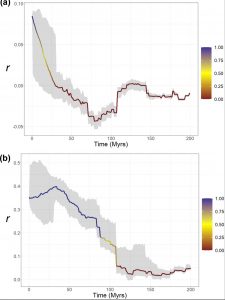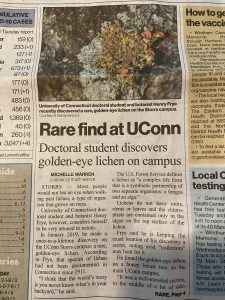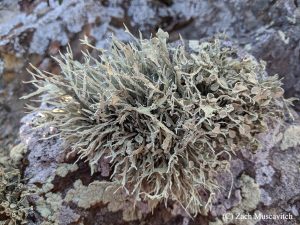Cole T.C.H., H.H. Hilger, J.B. Bachelier, B. Goffinet, P.F. Stevens, N.M. Shiyan, S.L. Zhygalova & S.L. Mosyakin. Spanning the Globe – The Plant Phylogeny Poster (PPP) Project. Ukrainian Botanical Journal: Short Communication 78(3): 235–241. https://doi.org/10.15407/ukrbotj78.03.235
Abstract reads: Historically, wallcharts and posters created by botanical illustrators, often highly skilled artists, have played an important role in teaching botany at the university level. Large-scale panels and posters can visualize complex interrelationships and entire stories in a clear and appealing overview in graphs, tables, and diagrams. Carrying this concept of educational tools into the electronic era, the Plant Phylogeny Poster project uses this approach for displaying evolutionary relationships in systematic botany. The Angiosperm Phylogeny Poster (APP) displays, as phylogenetically arranged clades, the orders and families of flowering plants (with orders hyperlinked to APweb, Stevens, 2001–onwards), the Tracheophyte Phylogeny Poster (TPP) families and genera of ferns and gymnosperms, and the Bryophyte Phylogeny Poster (BPP) orders and families of liverworts, mosses, and hornworts. The portfolio currently also includes about 30 posters on individual orders and families of angiosperms. Each group within these evolutionary trees is matched with essentially relevant morphological features, biogeographic occurrences, and other information in compactly condensed text blocks. All posters are freely available online, some in more than 30 languages, coauthored by a team of more than 130 botanists. The posters are regularly updated, current literature is cited. The project is expanding steadily and rapidly.
 Antoine Simon, who graduated from the University of Liège, Belgium, is joining our lab for a year, based on a fellowship from the Belgian American Educational Foundation. Antoine’s research focuses on lichenized fungi and their symbiotic partners, their evolution and diversification, and interactions.
Antoine Simon, who graduated from the University of Liège, Belgium, is joining our lab for a year, based on a fellowship from the Belgian American Educational Foundation. Antoine’s research focuses on lichenized fungi and their symbiotic partners, their evolution and diversification, and interactions.

